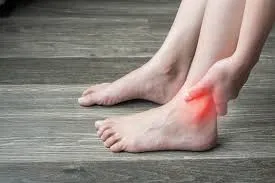How to Recognize and Treat Common Ankle Injuries

Ankles are key to mobility, offering support and balance during daily activities. Yet, they are also prone to injuries due to their location and range of motion. Whether you’re an avid runner, a casual walker, or simply navigating uneven terrain, understanding how to identify and care for an ankle injury can help you stay active and pain-free.
How To Identify an Ankle Injury
There are various types of injuries, each with its own signs and symptoms. Learning to recognize an ankle injury not only helps with appropriate home care but also helps determine when professional help is necessary.
1. Ankle Sprains
A sprained ankle happens when the ligaments connecting the bones in your ankle stretch or tear. Often caused by twisting or rolling the ankle, sprains are one of the most frequent injuries. Symptoms include swelling and bruising around the ankle, pain or tenderness, reduced range of motion, and difficulty bearing weight.
2. Ankle Strains
While sprains affect ligaments, strains impact muscles or tendons. This injury is often related to overuse or overstretching. Symptoms include muscle spasms or cramping, pain during movement, and weakness in the foot.
3. Fractures
Fractures, or broken bones, can vary from hairline cracks to complete breaks. These typically occur during high-impact activities or accidents. Signs of a fracture include severe pain, especially when moving the ankle, visible deformities or misalignment, and swelling and warmth near the injury. An instant inability to bear weight is another clear indicator.
Treatment Tips for Common Ankle Injuries
Minor injuries are often manageable at home with simple, effective methods. These practical guidelines provide clear steps for proper care:
R.I.C.E. Method
The R.I.C.E. method (Rest, Ice, Compression, Elevation) is widely recommended for easing pain and reducing swelling during the first 48 hours after an injury:
- Rest the injured foot by avoiding weight-bearing activities.
- Apply ice in 15-20 minute intervals to reduce inflammation.
- Use an elastic wrap for compression, but avoid wrapping too tightly, as this could cut off circulation.
- Keep the ankle elevated above heart level to minimize swelling.
Over-The-Counter Pain Relief
Using over-the-counter anti-inflammatory medications can help in managing pain and swelling. Always refer to dosage instructions and consult a pharmacist if you have any questions.
Gentle Movement and Exercises
Once pain decreases, gradually reintroducing light exercises, like ankle circles, assists with restoring flexibility and strength. Pushing too hard, too quickly, can worsen the injury, so take it slow.
When to Consult a Specialist
Some injuries require professional medical evaluation, particularly if the pain is severe or persists for more than a few days. Swelling that does not improve or an ankle that feels unstable also warrants attention. If you cannot bear any weight, experience numbness, or notice a visible deformity or suspected fracture, it is key to seek medical care. Specialists, such as podiatrists or orthopedic doctors, can perform imaging tests like X-rays or MRIs to diagnose the issue.Their recommendations may include physical therapy, bracing, or casting to aid recovery.
An Ounce of Prevention
Taking care of your ankle health is helpful for reducing the risk of future injuries and maintaining mobility over time. Simple habits like wearing supportive shoes can provide the stability your ankles need during daily activities or exercise. Warming up properly before physical activities helps prepare your muscles and joints, reducing strain and the likelihood of sprains. Additionally, practicing balance exercises, such as standing on one foot or using a balance board, strengthens the muscles around your ankles and enhances coordination. These small, consistent efforts can make a big difference in promoting long-term ankle stability and preventing potential injuries.
Stay Active and Healthy
From sprains to strains and fractures, ankle injuries are a bump in the road for many active individuals. Recognizing the signs and knowing how to treat these injuries is the first step toward a speedy recovery. If you’re unsure about your condition or suspect a serious injury, consulting a specialist is always a good place to start.





